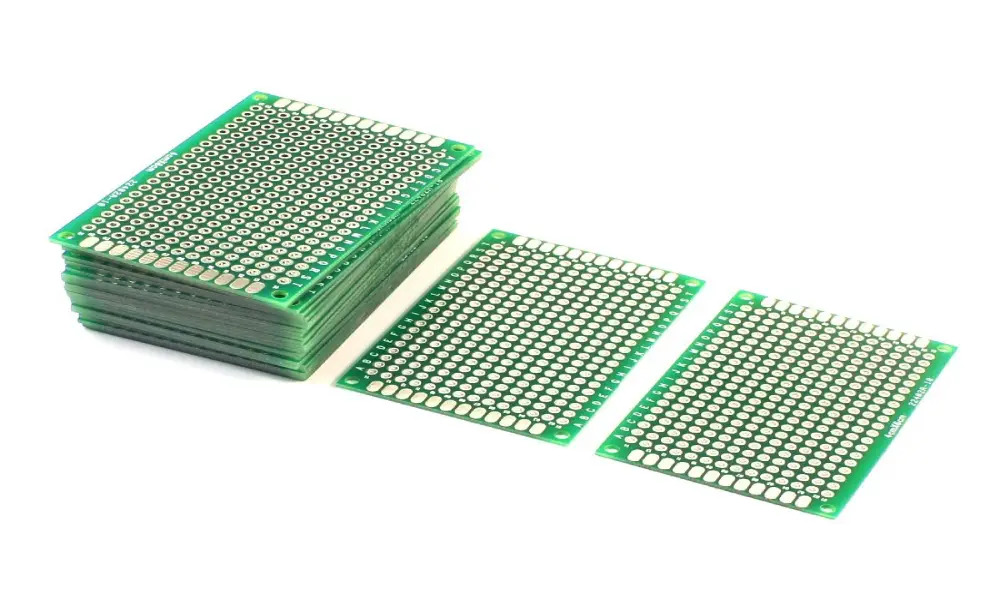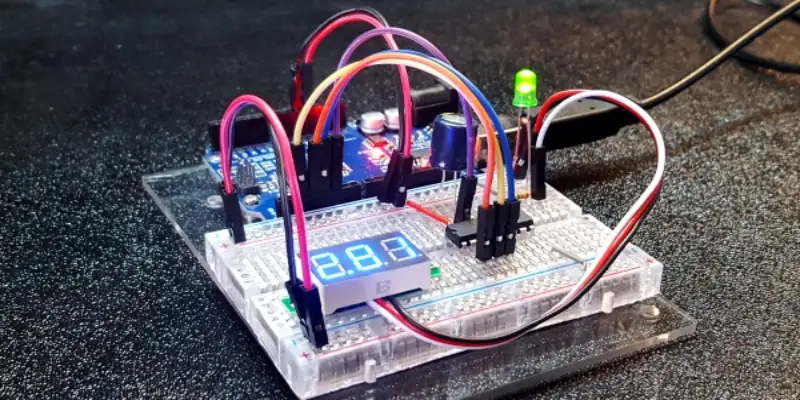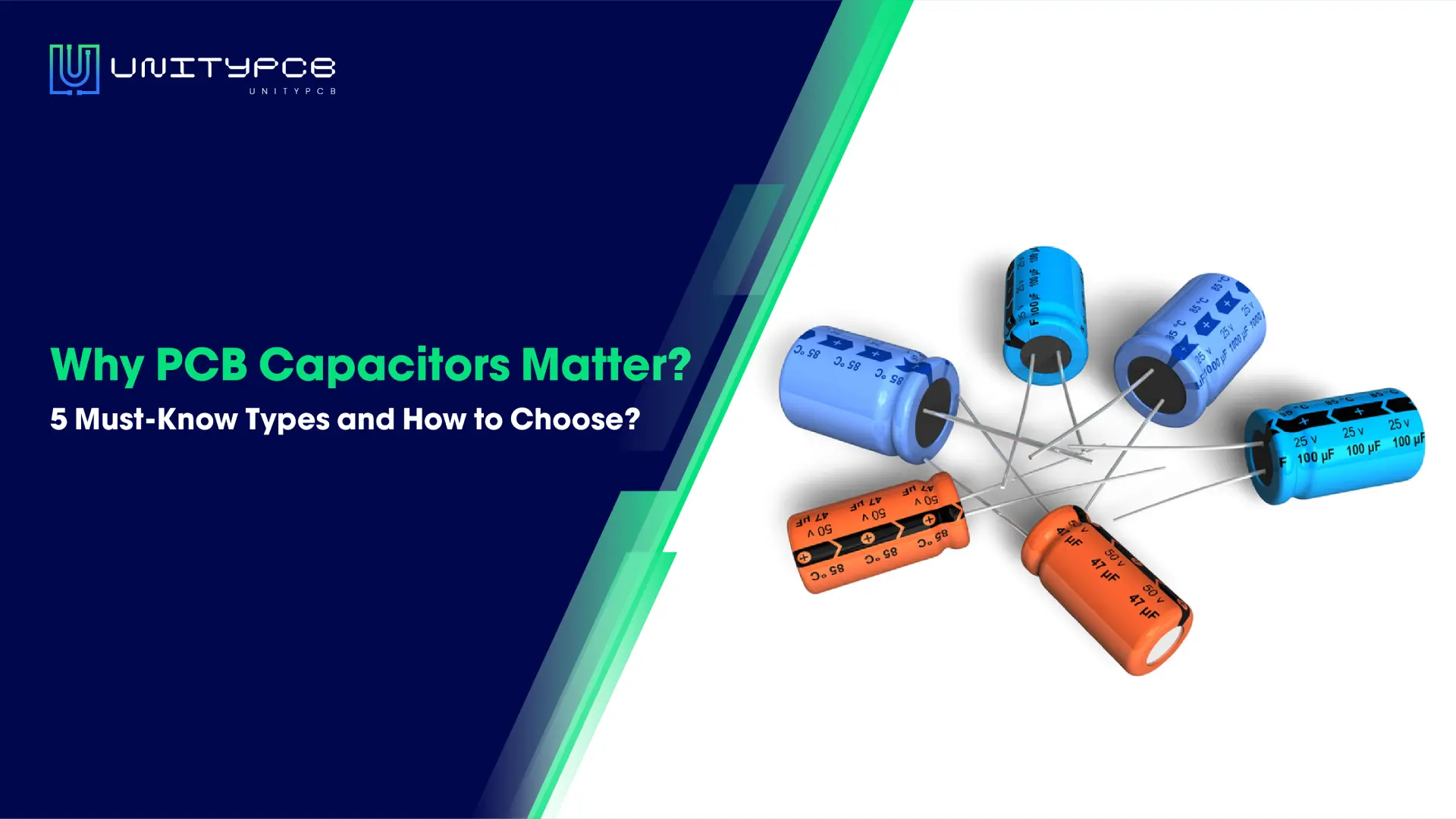When it comes to protoboard vs breadboard choices in electronics, engineers often face this common dilemma. Both tools play crucial roles in PCB prototyping and electronics development. While they perform a similar duty—allowing for rapid testing and assembly of electronic circuits—there are some notable differences between them. In this blog, we will explain them one by one and list the key differences, helping you decide which one you should use for your project.
What Is a Protoboard?
The protoboard, or perforated board, is a rigid circuit board that is made of fiberglass, or phenolic resin. It is featured with a grid of predrilled holes, and copper traces on one side of the board. Soldering is needed in protoboard to get a permanent electrical connection between one component and the other. These boards are also used to develop more permanent circuit implementation based on a validated design.

How Does a Protoboards Work?
To use a protoboard, insert the components into the pre-drilled holes. Then, solder the components to the copper pads using a soldering iron. The solder melts and forms a strong electrical and mechanical connection. On the protoboard, the holes are either isolated individually or pre-connected in strips to make it flexible with circuit layout. With this design, you can make both simple and more complex circuit configurations. Also, you can rely on this kind of board to make more robust and durable prototypes.
Advantages of Protoboards
- Stability and Durability: Protoboards are very durable and stable thanks to the soldered connections. Components on protoboards are attached firmly that can withstand physical movement and vibration without damage.
- Flexibility in Circuit Design: With the grid pattern, engineers can create circuits flexibly as they want. They can cut traces, jumper wires, and arrange components in different circuit configurations until the desired layout is achieved.
- Improved Prototyping: Protoboards are ideal for creating prototypes that are robust and durable. After verifying that a circuit design works, sending it to a protoboard provides better electrical integrity and stability, making it suitable for extended testing or small-scale use.
- Higher Complexity: Protoboards can be used to build more intricate circuits due to their stable connections and the layout flexibility. For those designs that require a high degree of accuracy, protoboard is a perfect choice.
Limitations of Protoboards
- Soldering Skills Required: Working with protoboards requires proficiency in soldering. If you don’t have soldering skills, there is a risk of cold joints or even damaged components, which can cause the circuit to fail.
- Less Reusability: When components are soldered in place on a protoboards, removing them can be tricky and damage the board, or the components. Therefore, these boards are usually not that reusable than breadboards.
- Troubleshooting Complexity: Components on protoboards are very hard to move once soldered, which makes circuit debugging harder. Therefore, testing points must be planned in advance, and careful visual inspection of solder joints and traces is necessary to identify issues.
What Is a Breadboard?
A breadboard is a board used to test or build a circuit. It lets you place components and connections on the board to ultimately make circuits without soldering. Your connections are taken care of by the holes in the breadboard that physically hold onto parts or wires where you put them, and electrically connect them inside the board. This is great for learning and quickly prototyping simple circuits.
How Do Breadboards Work?
In breadboards, electrical components like resistors, capacitors, transistors, and integrated circuits (ICs) are inserted into the holes. The breadboard’s metal clips connect the leads of the components together to build electrical connections. The rows and columns of holes let designers easily build circuits without the need of soldering, providing flexibility to make modification and reconfiguration.

Advantages of Breadboards
- No Soldering Required: The most fundamental benefit of the breadboard is that it is a solderless thing. With the board’s holes, users can insert component leads and make connections where needed.
- Easy for Newcomers: The breadboard is an excellent starting point for the electronics beginner. It is also accessible for novices to break into building circuits, due to requiring neither soldering equipment nor special tools.
- Fully Reusable Design: Since the components on the breadboards can be easily removed or reinserted for many times, the breadboards are high reusable. Therefore, these boards are perfect for testing and repeated circuit experimentation.
- Rapid Prototyping Capability: We can use a breadboard in order to make quick prototyping since it eliminates the need to solder or desolder. We can build circuits in minutes and can make any changes needed quickly.
Limitations of Breadboards
- Limited Stability: Breadboard connections can become shaky over repeated insertion and (especially) removal of components. This characteristic can lead to unstable circuit performance, especially in more complex designs.
- Basic Designs Only: Simple circuit design works best with breadboards. As circuit complexity rises, managing component organization gets more challenging, leading to a crowded and disorganized board.
- Not for Permanent Solutions: Breadboards are good for prototyping and testing, but really aren’t a good idea for permanent circuit implementations. The plug-in connections are not as durable and reliable as those that can be soldered onto a protoboard.
Protoboard vs Breadboard: What’s the Difference?
Understanding the key differences in protoboard vs breadboard options is essential for any electronics project, check the table below:
| Feature | Protoboard | Breadboard |
| Construction | Rigid FR-4 board with copper-lined holes | Plastic board with metal clip connections |
| Connection Method | Soldered connections | Push-in connections |
| Durability | Highly durable, permanent connections | Temporary, can become loose over time |
| Skill Level Required | Requires soldering expertise | Beginner-friendly, no special skills needed |
| Reusability | Limited – components difficult to remove | Highly reusable – easy component swapping |
| Circuit Complexity | Suitable for complex circuits | Best for simple to moderate circuits |
| Prototyping Speed | Slower – requires soldering time | Rapid- instant modifications possible |
| Cost Per Use | Higher initial investment, less reusable | Lower cost, highly reusable |
| Best Used For | – Final prototypes -Semi-permanent circuits – Small-scale production | – Initial testing -Learning/teaching – Quick experimentation |
| Signal Integrity | Better for high-frequency circuits | May have issues with signal noise |
| Physical Stability | Highly resistant to vibration/movement | Sensitive to physical disturbance |
Choosing Between Protoboard and Breadboard
The protoboard vs breadboard decision largely depends on your project requirements. Before you make the choice, consider the type of project, how long you plan to use it, how flexible you’d like it to be, and how complex it will be. Here are some guidelines to help you make an informed decision:
When to Use Breadboards?
Breadboards are generally used in rapid prototyping and testing circuits, especially when you are working on temporary circuits. Ideal projects for breadboards include:
- Learning and experimentation: Breadboards are good for beginners or educational environments where trial and error are important to learn.
- Simple, low-power circuits: Small projects such as simple sensors, LEDs and basic electronics that don’t need soldering are best done on breadboards.
- Quick changes and testing: Breadboards are used when you need to adjust your circuit every now and then, which allows you to add or remove components without having to solder components on and off.
When to Use Protoboards?
If your projects do not require constant removal and resetting, protoboards are more suitable. Ideal scenarios for protoboards include:
- Creating final prototypes: After your design is verified against a breadboard, the protoboard allows you to create a more reliable, soldered prototype.
- Low-volume production: For small-scale, low-cost production of custom circuits, protoboards can be used to create durable prototypes that can be replicated.
- Higher complexity circuits: For projects that require more than one component or complex layout, protoboards are better suited as they offer a more secure layout for making more complex circuits.
Final Words
In the protoboard vs breadboard debate, both tools have their place in the electronic designer’s toolkit. In the experimental phase, breadboards play a key role that allows easy and fast changes. While protoboards serve as a conversion point between prototype and production, providing increased reliability and permanence while retaining some of the simplicity of hand-wired circuits. If you understand these two critical tools and how they differ, you can make informed decisions based on the specific needs of your projects.


